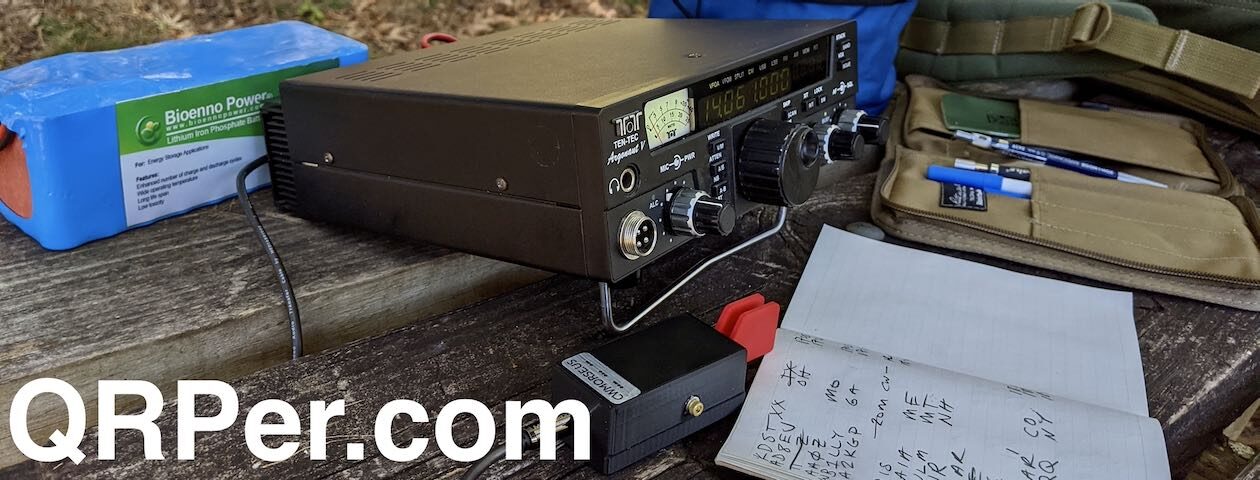Many thanks to Matt (W6CSN) who shares the following post from his blog at W6CSN.Blog:
Weekend POTA Roundup
by Matt (W6CSN)
It’s been a stormy past several days here in Northern California, but if anything, the weather only amplifies my motivation to go outside and get on the air.
Rather than do a separate writeup for each, this post is a roundup of my last four POTA activations, from Friday, February 2nd through Sunday, the 4th.

Thursday and Friday had been wet, with one storm in a series moving across the Bay Area. However, by Friday evening the cold front had passed and there was a break in the rain. This was a perfect opportunity to try an after work activation at the Presidio of SF (K-7889).
I hadn’t used the QCX-Mini in a while, and this activation reminded me why. I believe what is happening is that being so close to the antenna, RF interference causes clicking while keying, nearly to the point of distraction. I need to experiment with RF chokes on the key and audio lines to see if that improves the situation.
Fed up with the RFI on the QCX-Mini, I switched over to the MTR-4B which doesn’t seem to suffer the same issue. I wrapped up the activation after netting 21 QSOs in the cold west wind.

The next bout of rain wasn’t due to arrive until later Saturday afternoon. This was a change in the forecast that subsequently altered my plan to stay in Saturday soldering on my QMX Hi-Bander project.
Initially I went to Fort Point (K-0819) in the hopes of changing it up from my usual activation park but there were just too many people there. So seeking relief from crowds, I crossed the Golden Gate Bridge and went up on the slopes of Mt. Tamalpais.
I parked at Trojan Point at an elevation of approximately 1800 feet. See this post for more views from this location. The temperature was in the mid-40s, which is cold for us coastal Californians. Besides, the winds were picking up ahead of the next storm so I operated from the comfort of my vehicle using the Gabil 7350T base loaded vertical antenna on 15m and 20m.
This activation used the FT-818 and yielded 23 contacts, including JH1MXV from northwest of Tokyo, Japan coming in fairly strong on 21 MHz.
Driving back to San Francisco takes me right through the Presidio of SF (K-7889) and noticing that it was after 00:00 UTC, I made the last second decision to divert to East Beach to see if I could work in another activation before the anticipated rain.
At my usual spot for activating this park, it took only moments to raise the MFJ-1979 20m quarter wave and do a quick deployment of the MTR-4B on the trunk of the car. The wind was picking up, but not nearly as strong as it was up on the mountain.
After seven QSOs, the skies began spitting raindrops, this was going to be close! I closed the cover of the Maxpedition pouch to protect the radio and battery while the Bencher paddles could tolerate a little bit of moisture.
I was happy to have a Rite-In-The-Rain notepad for logging [Amazon affiliate link], because now I was certainly writing in the rain! Three more contacts and the activation was concluded with a hunt of Jim, WB0RLJ, in K-4011. Continue reading Matt’s Weekend POTA Roundup!













































